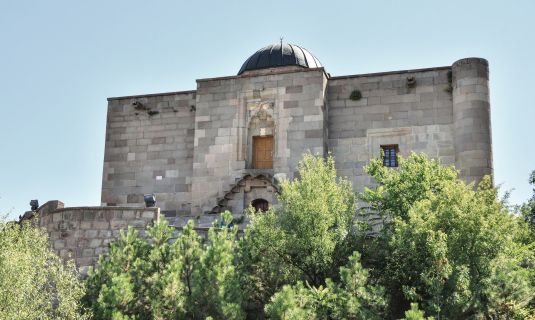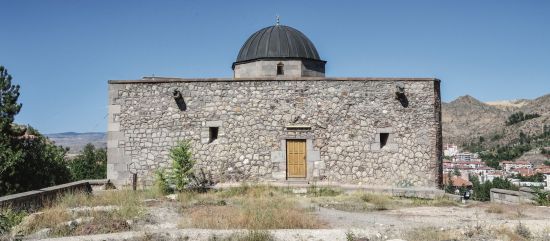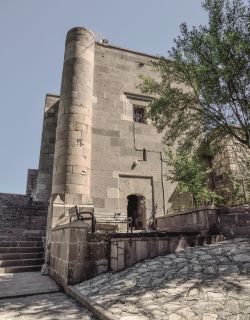TAŞ MASJID
Turkiye ÇANKIRI 13th Century
HOSPITAL OF ATABEY CEMALEDDIN FERRUHOlarak da bilinir.
1242
It is located in the Yeni neighbourhood downtown.
The complex comprising a hospital (dar al-shifa), a school of the sayings of the Prophet Muhammad (dar al-hadith), monumental tomb, and a mevlevihane (lodge for whirling dervishes) to the south is located on a high rocky hill in the south of Çankırı and only the tomb and dar al-hadith have survived.
The dar al-hadith known as the Taş, or Stone Masjid today, is a two-story building standing on an east-west rectangular area. The dar al-hadith is actually on the upper floor while there are two burial chambers downstairs.
Both floors are accessed on the north side. The entrance protrudes out and the upper floor is accessed via two flights of stone steps against the body wall. The structure is reinforced with a round tower at its northwest corner. There is a rectangular window in the west of the façade.
The doorway is placed with a niche topped with a muqarnas-filled hood; the inscription is over the doorway and there are two bosses in poor condition in the spandrels. The portal is framed on three sides with two borders cascaded inward. Inside the structure there is a domed part in the middle flanked with an iwan covered with a pointed barrel vault on the west and east sides. The eastern iwan houses the tiled cenotaph of Atabey Jamal al-Din Farruh, the patron of the dar al-hadith. The western iwan serves as the masjid and furnished with a mihrab on its qibla wall.
The doorway to the ground floor is placed directly beneath the doorway to the upper floor on the north façade. Over the low arch of the doorway is the replica of a serpent relief with interlocking body from the now-lost hospital.
The two burial chambers are independent from each other and the western chamber is accessed via a separate doorway on the west façade.
The doorway on the south façade of the dar al-hadith once opened into the hospital now gone. The inscription gives the name Al-Jamali bin Shahab al-Din. However, the date of the inscription is not known; therefore, it may also refer to a repair. From the hospital only the inscription plaque and two blocks with serpent reliefs have survived.
The west, north and east façades of the monument are faced with dressed stones while the south façade has rubble masonry and the southeast corner has brick masonry. On the inside, the central dome and its transition are of brick and the rest is faced with cut stones.
Having been restored by the General Directorate of Pious Foundations the monument is in good condition.
According to the inscription on the portal, the dar al-hadith was commissioned by Atabey Jamal al-Din Farruh in 1242 together with the tomb. It is understood that the non-extant hospital was also commissioned by him and completed on 7 October 1235.



